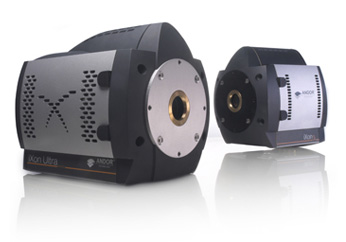Non-invasive hyperspectral imaging system for skin cancer screening
 Ultra-sensitive Andor iXon EMCCD camera proves case for hyperspectral imaging and may lead to new generation of rapid, automated cancer screening systems
Ultra-sensitive Andor iXon EMCCD camera proves case for hyperspectral imaging and may lead to new generation of rapid, automated cancer screening systems
Malignant melanoma (MM), the most dangerous type of skin cancer, is caused mainly by intense episodes of UV exposure and originates in the pigment-producing melanocytes in the basal layer of the epidermis. Early detection and complete excision of the primary lesions is crucial for reducing melanoma-related deaths but current diagnostic practice is highly subjective. This leads to unnecessary surgical procedures, which are highly-invasive and expensive.
Now, Takashi Nagaoka and a team of Japanese researchers have developed an automated, non-invasive melanoma screening system that may eliminate the need for a morphological examination and reduce needless surgery. Their Diffuse Reflectance Hyperspectral Imaging technique determines the levels and position of melanin and haemoglobin at the molecular level. The hyperspectral imaging data allows the team to differentiate between melanomas and other pigmented skin lesions based on this molecular pigmentary level.
“Since our first priority was to establish whether or not hyperspectral imaging data could be used for melanoma screening, we needed a camera of the highest possible sensitivity. The only camera that met our requirements was the Andor iXon EMCCD camera,” says Takashi Nagaoka of the Shizuoka Cancer Center Research Institute, Japan. “The iXon successfully captured cutaneous spectra in the visible to near infrared range that contain physiological information about melanin and haemoglobin within the melanoma lesion. Our melanoma discrimination index measures the variegation in spectra.
“Having established a workable index to identify malignant melanomas, the exciting possibility of a rapid screening system for general practitioners or other primary care providers is raised. We are working on such a system using the Andor Luca camera and believe it will enable non-specialist operators to identify PSLs that require further investigation or excision, saving both time and money. The Andor Software Development Kit supplied with the iXon camera speeded up the original research and the validation of the index. Now, it is reducing the time needed to develop our second-generation system as only minimal changes were required to adapt for the Luca camera.”
According to Antoine Varagnat, Product Specialist at Andor, “Non-invasive skin cancer screening has been the focus for an increasing number of research groups recently, illustrated by the development of bespoke instruments based on Hyperspectral imaging – such as the one described by Nagaoka-San’s group, or hyphenated Raman-OCT as reported by a US-Dutch team led by Anita Mahadevan at Vanderbilt University.The high sensitivity and speed of both the iXon EMCCDs and Newton NIR-optimized Deep-Depletion, as well as the ease of integration of these detectors in complex, demanding clinical setups have enabled the development of the next generation of high-throughput, patient-friendly diagnosis instruments. By making this type of diagnosis much more accessible and routine in a wide variety of clinical environments, early detection of malignant skin lesions, and subsequent early treatment of these lesions should greatly increase diagnosed patients survival rate.”
Andor’s modular Spectroscopy solutions encompass a wide range of high performance CCD, ICCD and EMCCD detectors, as well as a comprehensive range of Research-grade spectrograph platforms and versatile interfacing to microscopes or complex instrumentation such as demanding process control or medical/clinical environments.
News Categories
- » NEWS HOME
- » Automation & Robotics
- » Industry 4.0
- » Material Handling
- » Sensors
- » Quality & Testing
- » Machine Vision
- » Laser & Optics
- » Metalworking
- » Motion Control & Drives
- » Hydraulics & Pneumatics
- » Process Industry
- » Renewable Energy
- » Agriculture
- » Home & Office Furniture
- » Environmental Tech

